Zeroplus LAP-C 322000 Logic Analyzer Review
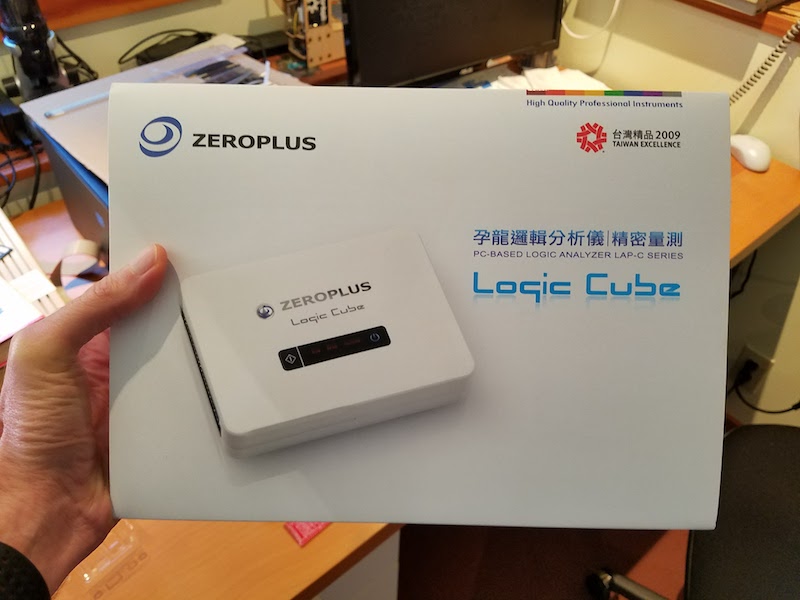
Who needs a logic analyzer? You do! If you enjoy working with electronics, a good logic analyzer is an indispensable tool. It lets you examine exactly what’s happening with your data signals, so you can troubleshoot problems quickly or reverse-engineer unknown protocols. Developing digital electronics without a logic analyzer is like navigating without a map.
In decades past, logic analyzers were bulky and expensive purpose-built machines from companies like Hewlett Packard. There’s still a place for such high-end equipment, but today most engineers can get everything they need from a small USB device that costs just a few hundred dollars. Saleae is one of the better-known names here, but it’s a crowded market with many worthy competitors. Which one is right for you?
Hello Zeroplus
Today I’ll take a look at an example of the Zeroplus “Logic Cube” series. Zeroplus is based in Taiwan, and their logic analyzer products have a good reputation among Taiwanese IT companies, but are less well known in the West. Full disclosure: Zeroplus sent me a demo unit for the purpose of this review. What you’ll read below are my own unfiltered opinions of the hardware’s strengths and weaknesses.
The members of this product family are buffered logic analyzers, with a few megabits of high speed on-board memory for storing the captured sample data. This is the more traditional approach to designing a logic analyzer, and it provides some advantages versus the on-the-fly USB streaming approach used by Saleae and other similar low-cost logic analyzers. Buffered LAs aren’t reliant on the PC’s USB bandwidth, so they can capture many channels at high sample rates without fear of saturating the USB link and losing data. The tradeoff is that buffered LAs have finite storage space, so the maximum amount of data that can be captured is limited. Data compression helps, but once the on-board memory is full, signal acquisition stops. In contrast, streaming LAs support “infinite” capture sizes limited only by the PC’s available RAM and disk space, but have limited bandwidth.
The Zeroplus logic analyzers in this Logic Cube series are commonly called “LAP-C” for the common prefix in all of their model numbers, and you’ll find the most pertinent resources on the web by searching for this term. LAP-C models are sold in seven different versions, differing mainly in the number of channels and amount of on-board memory. For this review, I tested the top of the line LAP-C 322000, with a retail price of $1699 in the United States. Here are the specs:
Logic Analyzer: Zeroplus LAP-C 322000
Number of Channels: 32
Sample Memory: 64 Mbits (2 Mbits per channel)
Max Sample Rate: 200 MHz
Vinput of Testing Channels: -30V to +30V DC
Retail Price: USD $1699
In comparison, the mid-range members of the LAP-C family pare back the number of channels and memory size in exchange for lower prices. For example, LAP-C 16064 is 16 channels / 1 Mbit / 100 MHz for $249, and LAP-C 16128 is 16 channels / 4 Mbits / 200 MHz for $399.
Unboxing and Hardware
While the front of the box has English text, the technical bullet points on the back are primarily in Chinese. This probably doesn’t matter much, since very few people will ever be browsing store shelves when shopping for a logic analyzer, but it shows that Zeroplus’ marketing team has additional translation work to do if they hope to attract more Western customers.
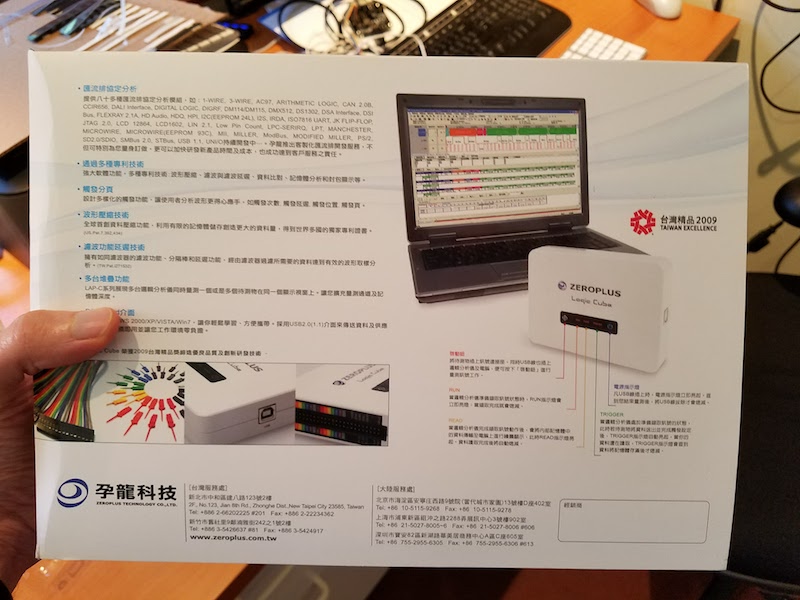
The 34-page instruction manual inside the box is also Chinese, but a well-written English-language manual can be downloaded here.
The logic analyzer unit and its accessories all fit inside a hardshell zippered case that’s included. While it’s a small thing, this is a very nice touch, and it makes it easy to pack up your project when you’re finished debugging hardware. The pulse width trigger module included with the LAP-C 322000 model is the only accessory that doesn’t go in the hardshell case.
The LAP-C 322000 package includes:
- logic analyzer main unit
- USB cable
- 32 flying lead wires
- 36 IC test hooks
- printed manual (Chinese)
- installation software CD
- hardshell case
- pulse width trigger module
- hookup wires for trigger module
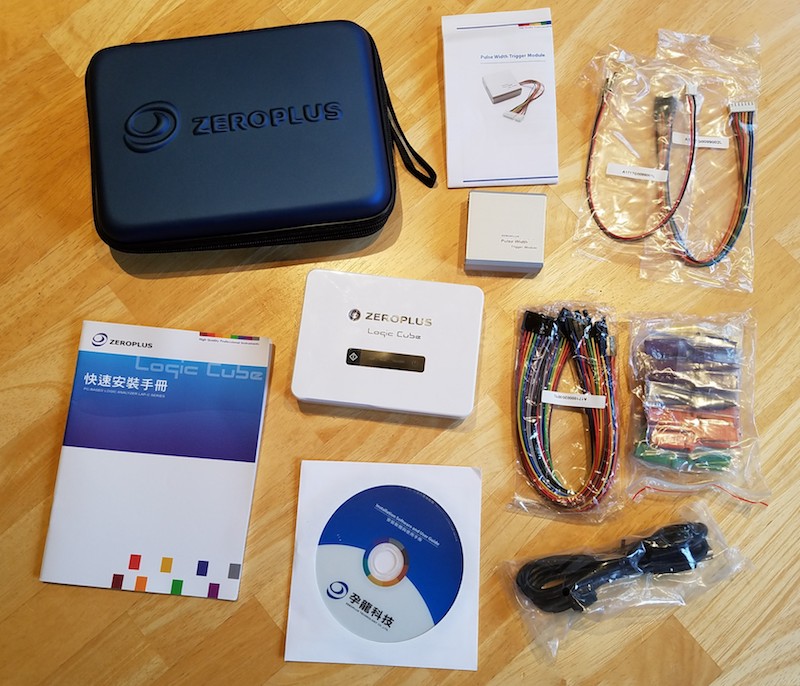
The pulse width trigger module is made from brushed aluminum. When connected to the main unit, this module upgrades the logic analyzer with a new feature: the ability to trigger on a high or low pulse whose duration is outside a user-selected range. This may be useful when working on PWM applications like dimmable lighting.
The main logic analyzer unit is made from an attractive gloss white plastic. The external interface is minimal: a button to start immediate captures, and status lights for Run, Read, and Trigger. The external connector is two rows of standard 0.1 inch male headers. In addition to the 32 data channel connections and ground pins, there’s also an external clock input, and a few special I/O pins for connecting the pulse width trigger module or a second LAP-C unit.
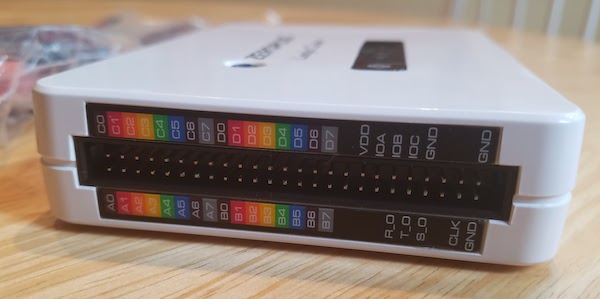
The LAP-C does not offer any analog measurement capability. While serious analog work demands an oscilloscope, some newer logic analyzers are starting to add low-bandwidth analog capability too. This can be useful for verifying that signal voltage levels are in a valid range, or that power supplies are behaving as expected. Analog measurement is a nice extra feature, but its absence here isn’t a deal-breaker.
Software
The LAP-C software is Windows-only. That’s not a big limitation, since any halfway-serious engineer will have access to a Windows machine even if it’s not their main system, but Macintosh and Linux software versions would have been nice. Windows 7, 8, and 10 compatibility is advertised. I used software V3.13.05 with Windows 7. You can download the software and try it out in demo mode, even if you don’t have the LAP-C hardware. The English-language software translations are generally well done and easy to understand.
The graphical interface appears geared towards advanced users, with a very large number of tools, measurements, and options visible directly on the main screen. This is great for power users, but may be overwhelming for newbies, or to anyone accustomed to the minimal interface of Saleae’s software. I found it a bit daunting at first, but after 30 minutes of experimenting and checking the manual, I had mastered the basics.
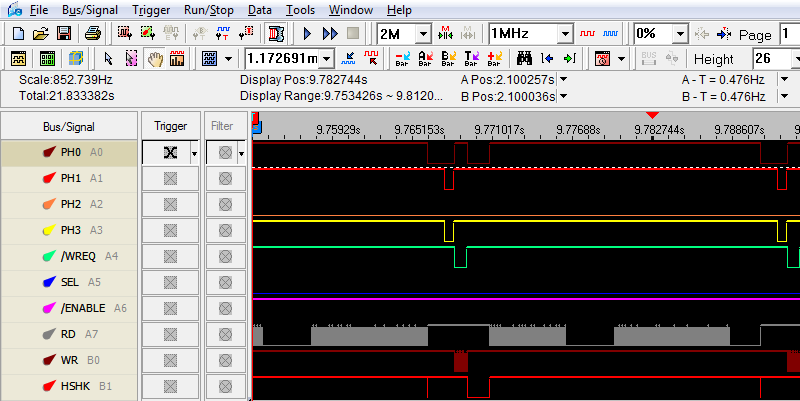
Some aspects of the UI would benefit from more polish. When viewing large data ranges, panning and zooming the waveform can be glitchy, with a laggy response to mouse input and different portions of the waveform scrolling a fraction of a second after others. Compared to the smooth pan and zoom of competing logic analyzer software, or to tools like Google Maps, that’s a little disappointing. Other minor graphical glitches and goofs sometimes appear, like waveforms that aren’t a uniform height or scale values that are the wrong units. The intervals of the ruler are also oddly chosen, with tickmarks at 0.409374912 seconds followed by 1.91042 seconds and then 3.411465 seconds, instead of divisions at even intervals using powers of 10. None of this prevents you from analyzing captured sample data, but it can be confusing and distracting.
A data capture can be started immediately by pressing a button in the software, or by pressing the physical button on the logic analyzer unit. Captures can also be triggered by a level or edge condition on a single channel, or by more complex functions like a specific value on a parallel bus, or a protocol-level event like an I2C NACK.
There are an impressive number of powerful features embedded in the LAP-C software. Repetitive run triggers the logic analyzer over and over, so you can look for one instance that’s different from the others. Noise filter ignores pulses with a duration below the threshold you specify. Data can be captured with an asynchronous internal clock, or synchronously using an external clock connection. Captured data can be searched in several different ways to find a region of interest. Waveforms and data can be imported and exported for additional examination with other tools. There are many more advanced analysis features that I didn’t have time to explore deeply. Some of these may only be valuable in specific circumstances, like the memory analyzer for examining address/data information, but they’re great when they provide the special capabilities you need.
One small but curious shortcoming: in the software’s list of choices for the sampling rate, it skips directly from 1 MHz to 10 MHz with no intermediate options. Most of my electronics projects operate a speeds faster than 1 MHz but slower than 10 MHz, so the missing sample rate options are a bigger issue for me than they might be for others.
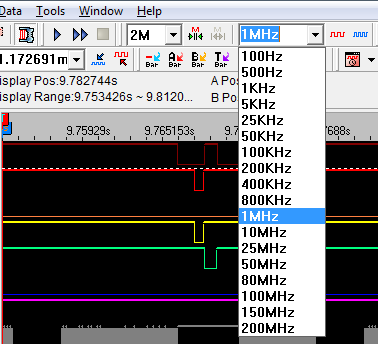
Capturing and viewing sets of raw waveforms is great, and is the core of logic analyzer usage. But to really get the most out of the tool, you’ll want to use the software’s protocol analyzers to provide a high-level representation of the data. A protocol analyzer is a software module that converts raw waveforms into decoded data packets. For example, if the software offers an I2C protocol analyzer, then you can view the captured sample data as a series of device addresses, data bytes, and ACKs, instead of counting raw transitions of the SCK and SCL signals while you thumb through an I2C reference guide. The LAP-C software offers over 100 protocol analyzers, including I2C, SPI, serial (RS-232C/422/485), JTAG, PS/2, USB, 1-WIRE, CAN, IRDA, 3-WIRE, and many more. Some of these used to be extra cost options, but since 2016 all the protocol analyzers are available free. Here’s a typical protocol analyzer example from Zeroplus:

How Much Sample Memory Do You Need?
When purchasing a buffered logic analyzer, you need to predict in advance how much sample memory you’re likely to need. Underestimating is bad: if there’s not enough sample memory, you won’t be able to capture as many channels for as long a duration as needed for your debugging work. But overestimating is bad too: it means you’ll pay hundreds of dollars extra for additional sample memory you don’t need. So how can you decide how much memory is enough?
This is a difficult question to answer, because it depends heavily on the type of electronics work that you do. You might work primarily with low speed serial signals, or you might need to analyze a wide parallel bus running at high speeds. Your data might be highly compressible with the LAP-C’s compression algorithm, or it might not. This leads to a frustrating “it depends” answer that satisfies no one.
For my own hobby electronics work over the past few years, I typically need to analyze systems with 5 to 10 signals running at speeds between 1 MHz and 10 MHz. My normal work pattern with a streaming logic analyzer is to manually start the capture, and record a few seconds of data, then examine it afterwards to zoom in on the interesting parts. Using a buffered logic analyzer, without the benefit of compression, this would require a worst case of 10 signals times 10 MHz times 10 seconds, or 1000 Mbits total. My simple experiments with LAP-C compression found that it provided about a 10x improvement for my data, so that reduces the memory requirement to 100 Mbits – close enough to the LAP-C 322000’s 64 Mbits. So with the top of the line LAP-C model, I could probably support my existing work pattern, but anything with less memory would be insufficient.
To really get the benefit of the LAP-C hardware, I would need to stop using 10 second long captures, and instead set up triggers to capture only the few hundred milliseconds or microseconds I’m really interested in. That would require some extra time for setup, but would greatly reduce the amount of memory needed.
Other Thoughts
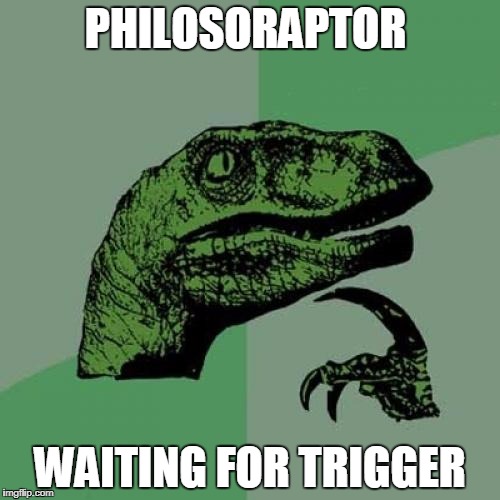
Zeroplus’ web site lists two official US distributors, and one appears to only stock the entry level LAP-C 16032, leaving a single source for most LAP-C models in the US. With a bit of Google searching, you can also find third-party LAP-C sellers from Asia who will ship directly to the US. Direct sales from the Zeroplus web site would be a welcome addition, but are not currently an option.
Is the Zeroplus LAP-C series right for you? It depends on what you plan to do with it. For the casual electronics hobbyists who are typical readers of this blog, the $1699 price tag of the LAP-C 322000 may be more than they’re willing to spend, but they probably don’t need all the features of the LAP-C 322000 either. Zeroplus offers three LAP-C models with slightly lower specs all priced below $400, which are probably a better fit for part-time garage hackers. I expect that most hobbyists will be fine stepping down from 32 to 16 channels, although stepping down from 64 Mbits of memory to 4 Mbits or 1 Mbit may be a concern.
With 4 Mbits and 16 channels, at a 10 MHz sample rate and using compression, you’ll get a capture window of a couple hundred milliseconds. That’s small enough so that manual triggering is unrealistic. Instead, you’ll need to plan ahead of time to decide what your goal is with this capture, and how you can construct a trigger to capture exactly the region you need to examine. For power users working with high speed systems and large numbers of channels, this will already be familiar. They’re more likely to know specifically what they’re looking for, and to see complex trigger setup as a normal and expected part of debugging. They’re also more likely to benefit from some of the LAP-C’s advanced features and hardware options like external clock input, pulse width triggering, and detailed software analysis. The breadth and depth of the LAP-C software’s various tools and analyzers is impressive, and will surely be a boon for hardcore electronics engineers. Beginners and others with more basic needs may be better off with an 8-channel streaming logic analyzer with a simple and friendly software interface.
What about the general merits of buffered vs streaming logic analyzer designs? For situations where there’s enough USB bandwidth to stream the sample data on the fly, I believe that approach provides a better user experience. There’s no need to worry about trading off sample rate for sample depth, or worrying whether the capture window will be large enough to contain all the events of interest. But for more demanding situations with large numbers of channels and high sample rates, streaming just doesn’t work. 32 channels at 200 Mhz sampling rate is 6.4 Gbits/sec, which is more than USB 3.0’s total maximum theoretical bandwidth and far more than its real-world bandwidth. So depending on the application, both streaming and buffered designs have their place.
My ideal logic analyzer would be one that operates in streaming mode where sufficient USB bandwidth is available, and falls back to buffered operation when streaming won’t work. That would probably be needlessly complex and expensive, but I can dream!
Read 4 comments and join the conversation4 Comments so far
Leave a reply. For customer support issues, please use the Customer Support link instead of writing comments.


Regarding the Windows-only software: Sigrok (https://sigrok.org/) is open source and cross-plattform, and claims to support this device (https://sigrok.org/wiki/ZEROPLUS_Logic_Cube_LAP-C%28322000%29).
NKC Electronics is selling all the models in their amazon store
I have both the 32-channel Zeroplus (with all the decoders) and a Salee 4-channel logic analyzer. The Zeroplus is fantastic when you need brute force “logic power” for a project. However, it is really cumbersome for smaller “is this resetting?” The combination of the two makes it possible for me to debug almost anything (that a logic analyzer can debug.)
What about a thunderbolt-over-USBc streaming analyzer? 😉